The 3 different types of fishing line
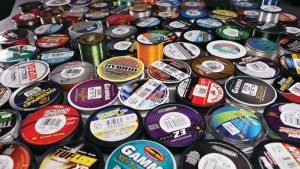 When you hear stories about the “big one” that got away. What is the most common thing that happened to cause the loss? Most of the time, it is the fishing line that broke. It is not the most talked about thing in your tackle box. None of your friends probably ask “what type of line did you have on there” when you pull in that big catch. However, it is easily the key component to landing the fish once you have it on the hook. Knowing the different types of fishing line available today is key.
When you hear stories about the “big one” that got away. What is the most common thing that happened to cause the loss? Most of the time, it is the fishing line that broke. It is not the most talked about thing in your tackle box. None of your friends probably ask “what type of line did you have on there” when you pull in that big catch. However, it is easily the key component to landing the fish once you have it on the hook. Knowing the different types of fishing line available today is key.
There seems to be as many different fishing lines as there are fish. Today, we are going to focus on the three main types of fishing line; monofilament, braid, and fluorocarbon. Not all lines are created equal and you learn when to use which line.
MonoFilament
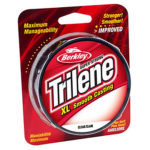 This is the type of line that most of us probably grew up on. It is still one of the most popular types of fishing line available. Mono line will typically be a lower cost than the other types of fishing line.
This is the type of line that most of us probably grew up on. It is still one of the most popular types of fishing line available. Mono line will typically be a lower cost than the other types of fishing line.
Monofilament has some advantages, it will hold better to a reel and won’t slip through a knot nearly as easily as braided line. It’s also translucent, so it’s less likely to be detected by fish. Mono line will stretch. This can be a useful quality or negative quality, depending on they type of fishing you are doing. If you are wanting some delay in you hookset, then mono line may be just the type of fishing line you are looking for. On the other hand, if you are wanting a more immediate response in the hookset then you may want to look elsewhere. This stretch quality may also make it more difficult to detect lighter strikes. The strike can be absorbed by the line and you will never feel it in the rod. Furthermore, monofilament lines have a memory. This means it will hold the shape of the reel, which will cause curls in the line between the rod and lure.
Braid
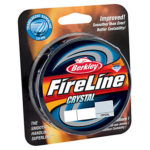 Braided fishing line is becoming more and more popular. Just as the name suggests, it is multiple very thin strands of man made materials (Dacron, Spectra or micro-dyneema) braided or woven together to make the line. Braided fishing line is much stronger than other types of fishing line of the same diameter. This means that other types of the same test will be much thicker. Braided fishing line is also very resistant to abrasion. This makes it the perfect choice when fishing in rocky areas. It also does not stretch like mono does. You will be able to feel every strike or impact your lure makes.
Braided fishing line is becoming more and more popular. Just as the name suggests, it is multiple very thin strands of man made materials (Dacron, Spectra or micro-dyneema) braided or woven together to make the line. Braided fishing line is much stronger than other types of fishing line of the same diameter. This means that other types of the same test will be much thicker. Braided fishing line is also very resistant to abrasion. This makes it the perfect choice when fishing in rocky areas. It also does not stretch like mono does. You will be able to feel every strike or impact your lure makes.
When picking a braided line, you will want to base you choice on the diameter and not necessarily the pound-test. If you reel calls for a 10-pound mono, you will want to purchase a braided line with the same diameter. It would take a ton more of a 10-pound braided line to fill the reel because it would be much smaller.
There are a couple of disadvantages to braided lines. First, they tend to slip on the spool. Many anglers will start their spool with a mono line and then knot in the braided line. This is a great workaround to the issue. The second downside and more impactful one is the fact that these lines are opaque. The opaque nature can scare off some fish.
Fluorocarbon
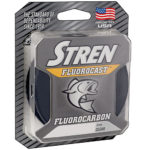 Fluorocarbon is still somewhat new and has some promise. The main promise of this type of fishing line was that it is near invisible underwater. It is the one type of line that will never scare away a fish. However, the other cool aspect to this type of line is its density. This is the most dense of the three types, which means less memory and less slack. Unfortunately, the lack of memory also causes problems. The line tends to continue to come off the reel at the end of the cast.
Fluorocarbon is still somewhat new and has some promise. The main promise of this type of fishing line was that it is near invisible underwater. It is the one type of line that will never scare away a fish. However, the other cool aspect to this type of line is its density. This is the most dense of the three types, which means less memory and less slack. Unfortunately, the lack of memory also causes problems. The line tends to continue to come off the reel at the end of the cast.
Because of the positives and negatives of this type of fishing line, you will see it used heavily for leaders. Baitcasters are the best type of reel if you choose this type of line.
As always, keep an eye on our Fishing Gear page for the latest in line technology and reviews!

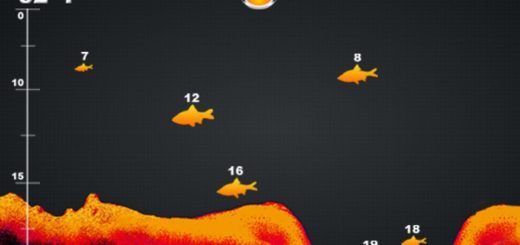
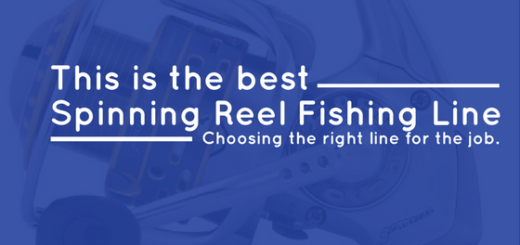

Recent Comments